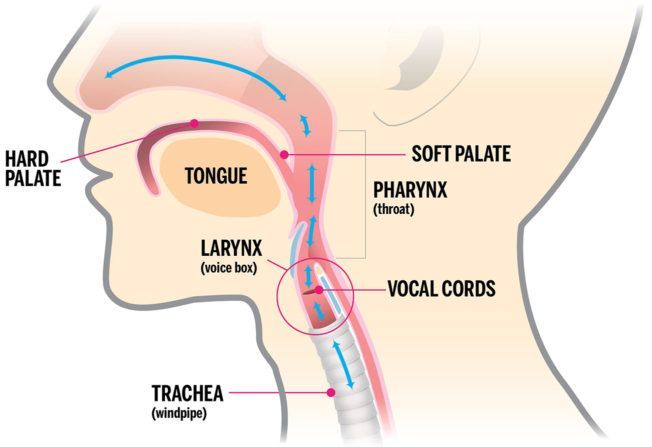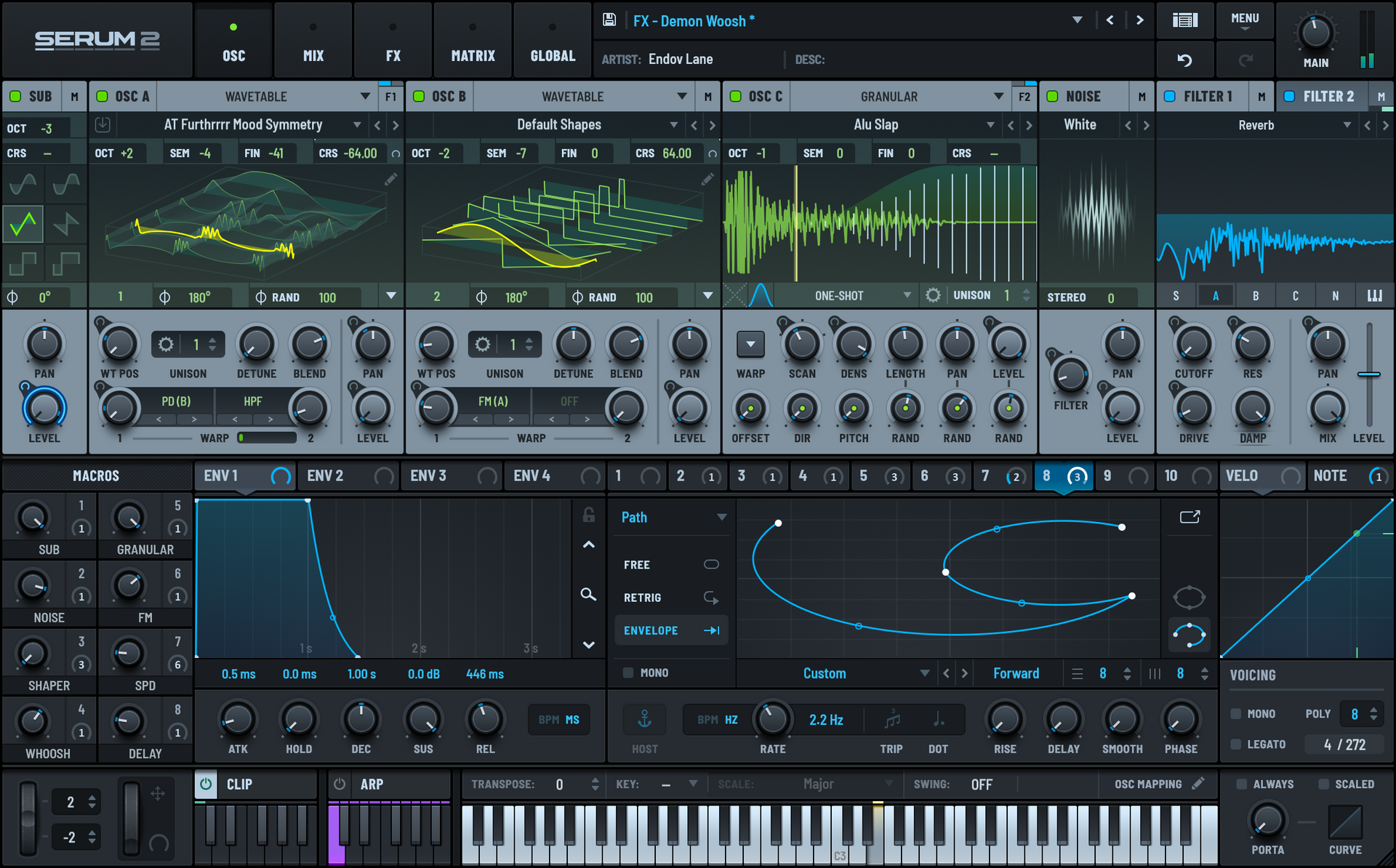10 Best Vocal Warm-Ups That Will Improve Your Singing
Warming up your voice before singing is essential! These ten best vocal warm-ups for singers will develop and improve your singing performance.

What are vocal warm-ups for singers? A vocal warm-up is an exercise that prepares the voice for singing, acting, or other use. Whether recording in the studio or performing live, vocal warm-up exercises are essential for achieving the best performance.
10 Best Vocal Warm-Ups for Singers
Vocal exercises are an integral part of improving, developing, and protecting your voice. Here are ten effective vocal warm-ups for singers:
1. Breathing Exercises for Singers
The most basic and essential voice exercise for singers is breath control. It’s common to breathe from the chest during routine activities like speaking. However, singing requires breathing from the diaphragm.
Singing from your diaphragm gives your voice more power, control, and expressive tone. It also helps avoid straining your voice and releases tension that may affect your performance.
Two common breathing exercises are inhaling into your diaphragm and exhaling on a hiss. To practice this exercise:
- Maintain proper posture and relax your body. Stand up straight and relax your shoulders and chest.
- Slowly breathe in through your mouth for five seconds. As you inhale, bring the air deep into your diaphragm. Your belly should expand outward. A controlled breath should not make your chest or shoulders rise.
- Slowly exhale from the same position for five seconds. While exhaling, make a hissing “sss” sound. Also, keep your chest and shoulders relaxed.
Repeat this breathing exercise several times. Try inhaling and exhaling for longer durations to build more lung capacity and control.
2. The Siren Exercise Warms Up, and Safety Expands Your Vocal Range
The siren exercise will warm up your range and stretch your vocal cords. This technique also helps you transition through the notes smoothly without cracking. To practice this exercise:
- Make a continuous “ng” or “ooh” syllable sound.
- Start at the lowest note in your vocal range and gradually glide up to the highest note you can reach comfortably.
- Continue holding the “ooh” sound and glide back down to the lowest note you can reach comfortably.
- Repeat several times by gliding up and down your vocal range, like you’re making a siren sound for an emergency vehicle.
This technique should feel smooth and relaxed. Sing at a comfortable level and don’t extend your range. As you practice, work on transitioning through the different vocal registers without cracking. For example, the transition from your chest voice to head voice.
3. Lip Trills Warm Up Your Diaphragm and Improve Breath Control
Lip trills or lip bubbles warm up the vocal cords and diaphragm, improves breath control, and reduces tension. The technique involves making a motorboat sound with your lips, causing them to vibrate rapidly. It’s a fun and effective technique! To practice this exercise:
- Relax your lips and cheeks. This step is essential because tight lips will not trill.
- Squish your lips together into a loose pucker. Also, use your index fingers to push your cheeks upwards at the corners of your mouth.
- Inhale through your nose and quickly exhale out your mouth to make your lips vibrate rapidly. Produce a motorboat sound or “brrr” sound.
As you improve, add sound to your lip trill. First, sing short and long notes while trilling. Then, try to produce buzzing melodies. You could also combine lip trills with the siren exercise.
4. Tongue Trill Warm-Up Exercises Relieve Tension
Tongue trill exercises are similar to lip trills but with your tongue. The technique involves curling your tongue and rolling your “R’s” as you go through your vocal range. To practice this exercise:
- Relax your tongue and place it behind the front upper teeth.
- Inhale through your nose and exhale out your mouth. While exhaling, make your tongue vibrate rapidly like when rolling an “R” syllable or imitating a cat purr.
- Hold the sound steady for several seconds to warm up your tongue and improve breathing.
As your endurance improves, try tongue trills for longer durations. You could also combine this technique with the siren exercise.
5. Humming Exercises Stretch Your Vocal Cords
Humming is one of the best all-around vocal exercises. This technique helps stretch the vocal cords, relaxes your facial muscles, and improves breathing. Humming also develops your vocal resonance and tone quality. To practice this exercise:
- Relax your facial muscles and body.
- Place the tip of your tongue behind your bottom front teeth.
- Produce a “hmmm” sound with your jaw open and your lips closed.
- Hum notes up and down your range while keeping your mouth closed.
Repeat this exercise several times. Also, try to increase the intensity of the humming vibration each time. The vibrations generated by the hum relaxes your face muscles and relieves tension that can affect your voice.
Next, repeat the process with your mouth open. This time, produce an “ahh” sound while humming notes. Also, challenge yourself by holding notes and while humming for longer durations.
6. Vowel Warm-Up Exercises Improve Voice Clarity and Articulation
Controlling the shape of your mouth and tone when singing vowels will enhance your voice clarity. This exercise also helps improve the quality of tone, pitch, vowel shape, and breath control.
When forming vowels, it’s essential to know the right lip, tongue, and jaw position. Having a controlled mouth position will help you pronounce words with greater clarity and articulation. To practice this exercise:
- Sing through the vowels “ Ah, Eh, Ee, Oh, Ooh ” on the same pitch.
- Practice maintaining a consistent mouth shape to produce them naturally and clearly. Avoid manipulating your mouth, tongue, and jaw to force a vowel sound.
- Next, move up in pitch a half step and sing through the vowels again.
- Repeat the exercise by singing vowels up and down your vocal range. Pay attention to the shape of your mouth and how each vowel opens or closes the throat muscles.
With practice, you’ll be able to change tones with clarity, control, and confidence.
7. Solfege and Scale Exercises Help You Recognize Notes by Ear
What is solfege? Solfege is a musical system that assigns a unique syllable to every note of the musical scale. Major and minor scales have seven notes. Therefore, the solfege system has seven basic syllables: Do, Re, Mi, Fa, Sol, La, Ti, Do .
Solfege works by associating these syllables with the sound of each musical pitch. This system is great for identifying relationships between different notes in music. It’s also easier to remember and sing solfege syllables than the traditional letters or numbers of each musical scale.
Moreover, the solfege vocal warm-up exercise will help you recognize the different scale pitches by ear and stay in tune. It’s an excellent ear training exercise! It will also help you learn pitch, harmony, and sight-reading musical scores.
Start on middle C and sing through the solfege up and down the scale. Take your time and listen to each pitch. For example, the C major scale has the notes C, D, E, F, G, A, B . Therefore, sing “Do” for C, “Re” for D, and so on.
You can practice singing solfege with a piano. Start slow and work on increasing your speed. As you progress, try this vocal warm-up without a piano. Also, start at a higher pitch each time to improve your singing ability.
8. Tongue Twister Exercises Improve Vocal Articulation
Tongue twister exercises improve vocal articulation and pronunciation. It’s vital to pronounce words clearly when singing. The last thing you want to do is become tongue-tied while performing.
Tongue twisters train your brain and mouth to handle transitions between difficult syllables. Practice repeating short phrases that are difficult to say quickly. As you progress, try repeating them at various pitches.
Classic vocal warm-up tongue twisters include:
- She sells seashells by the seashore
- Sounds abound when the mouth is round
- Peter Piper picked a peck of pickled peppers
- A synonym for cinnamon is a cinnamon synonym
- A proper cup of coffee from a proper copper coffee pot
You articulate sounds with your lips, tongue, teeth, jaw, and palate. Tongue twisters will stretch out these muscles, reduce tension, and improve the quality of your voice. Clear vocal expression is vital!
9. Yawn and Open Your Throat to Relieve Tension
Yawning will relax your jaw, throat, tongue, and facial muscles. It also helps with breath control. To practice this exercise:
- Open your jaw wide and inhale slowly as if you’re yawning.
- Keep your jaw and tongue relaxed at their natural resting points. Also, make sure your chin posture and shoulders remain relaxed as you inhale and exhale.
- Exhale slowly as you close your mouth. Bring your lips together, but keep your teeth apart. The tongue should also lie relaxed, touching the back of the bottom teeth.
- After taking a few good yawning breaths, try humming while exhaling. Produce a “hmm” sound at a comfortable pitch and control your breath as you exhale.
- Relax and repeat as often as needed. Try to extend the duration you hold the pitch each time. Also, practice moving the pitch up and down your range as you continue.
Loosening up your throat and facial muscles with this exercise will reduce possible voice straining. It also increases the oxygen flow to your brain, which will make you more alert. As a result, singing becomes a lot easier.
10. Jaw Loosening Exercises Release Facial Tension
The jaw massaging exercise releases jaw and mouth tension. Loosening your jaw and facial muscles will also help you pronounce words clearly when singing. A tense jaw can affect your voice and performance.
Use your fingers or palms to massage the muscles around your jaw with these steps:
- Locate the area below the cheekbone where it meets the jawbone.
- Massage this area in a circular motion to stimulate blood flow.
- Continue to massage while lowering and raising your jaw.
The jaw is one of the fundamental controllers of the voice. Its movement and position will make a difference in how easy it is to sing.
Why Are Vocal Warm-Ups Important?

Maintaining your vocal health will protect and improve one of your most valuable assets – your singing voice.
The soft tissue of your vocal cords and inner muscles of the larynx are delicate. They must be treated with care to reduce damaging your voice or ability to perform.
Like athletes stretch before a game, singers should warm-up before a vocal performance. Vocal warm-ups loosen and relax your singing muscles. Proper vocal warm-ups will:
- Improve the quality of your voice
- Reduce muscle and vocal tension
- Safety expand your vocal range
- Minimize the risk of vocal injury or voice loss
- Improve breath control and voice articulation
- Reduce vocal break, croaking, and cracking
- Help you sing for longer periods with less effort
- Strengthen your voice over time with continued practice
It’s absolutely necessary to always warm-up before singing!
When Should You Do Vocal Warm-Ups?

Vocal warm-ups should be an integral part of a singer’s practice routine. Vocal training and conditioning require frequent practice.
- Warm-up your singing voice every day for at least ten or twenty minutes.
- Always practice vocal warm-ups and exercises before a performance, show, or studio session. Repetition is key!
- Start with short, gentle exercises and slowly increase intensity to reduce damaging your voice or ability to perform.
Also, consider investing in voice therapy, singing lessons, or a great vocal coach. These trained experts will show you how to keep your singing muscles, breathing, and vocal cords in excellent condition.
Conclusion
Vocal warm-ups are essential for maintaining a healthy voice. Whether you’re learning to sing or at the height of your career, vocal warm-ups should be a standard part of your vocal training.
Learn Vocal Production at Icon Collective’s Vocal Artist Program
ICON’s new Vocal Artist Program in Los Angeles is an opportunity to find your voice and develop your music skills. Students will unlock the secrets to becoming a better singer, songwriter, and performer.
This extensive 12-month program focuses on vocal training, songwriting, and performance. You’ll train your ear and expand your vocal range through weekly singing lessons and vocal training from a professional vocal coach. Throughout the program, you’ll also use advanced songwriting techniques to hone your music production skills. Students will graduate with the knowledge and experience to create original, commercial-grade music.



